You Have to See This Ultra-Luxe 1910s Mansion on Chicago’s Lake Shore Drive
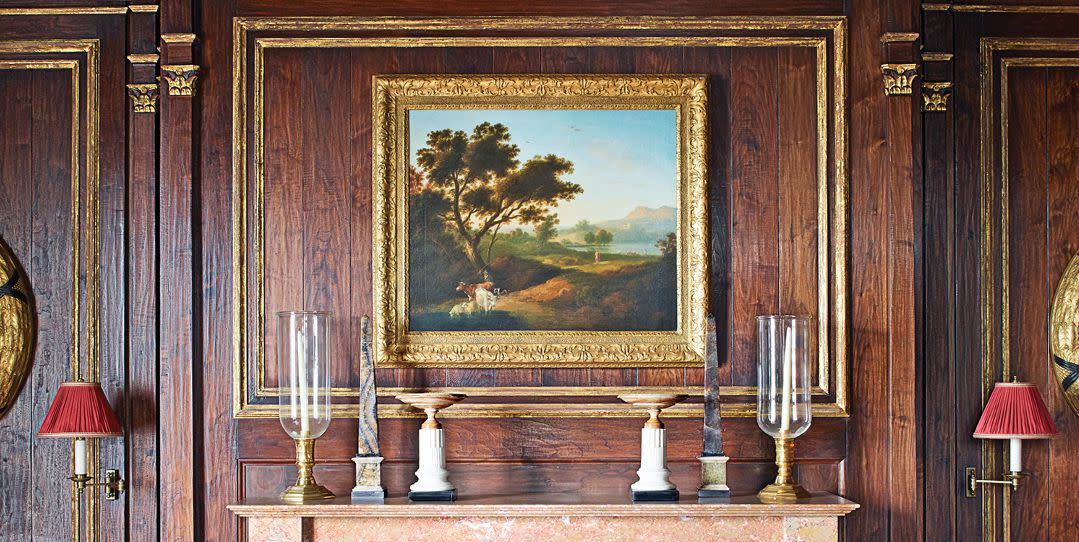
The wind whips across Chicago’s Lake Shore Drive no matter the season. But within the 1910s mansion on Lake Michigan that decorator Alessandra Branca recently completed for a client after five years of construction, all is calm. Or more than just calm—serene. Under her guidance, the four-story Georgian edifice has become a neoclassical refuge bathed in supersaturated color and rich textures—the perfect place for its owner, a man-about-town, to sip a Campari on a balmy June afternoon or nurse a cognac late into a December night. “You want to feel both wrapped in solitude and ready to go out into the world,” says Branca, who is based in the Windy City but was raised in Rome, a fact that is writ large on the project, with its mixture of references to Italy’s past and present. “You want to feel comforted and also energized.”
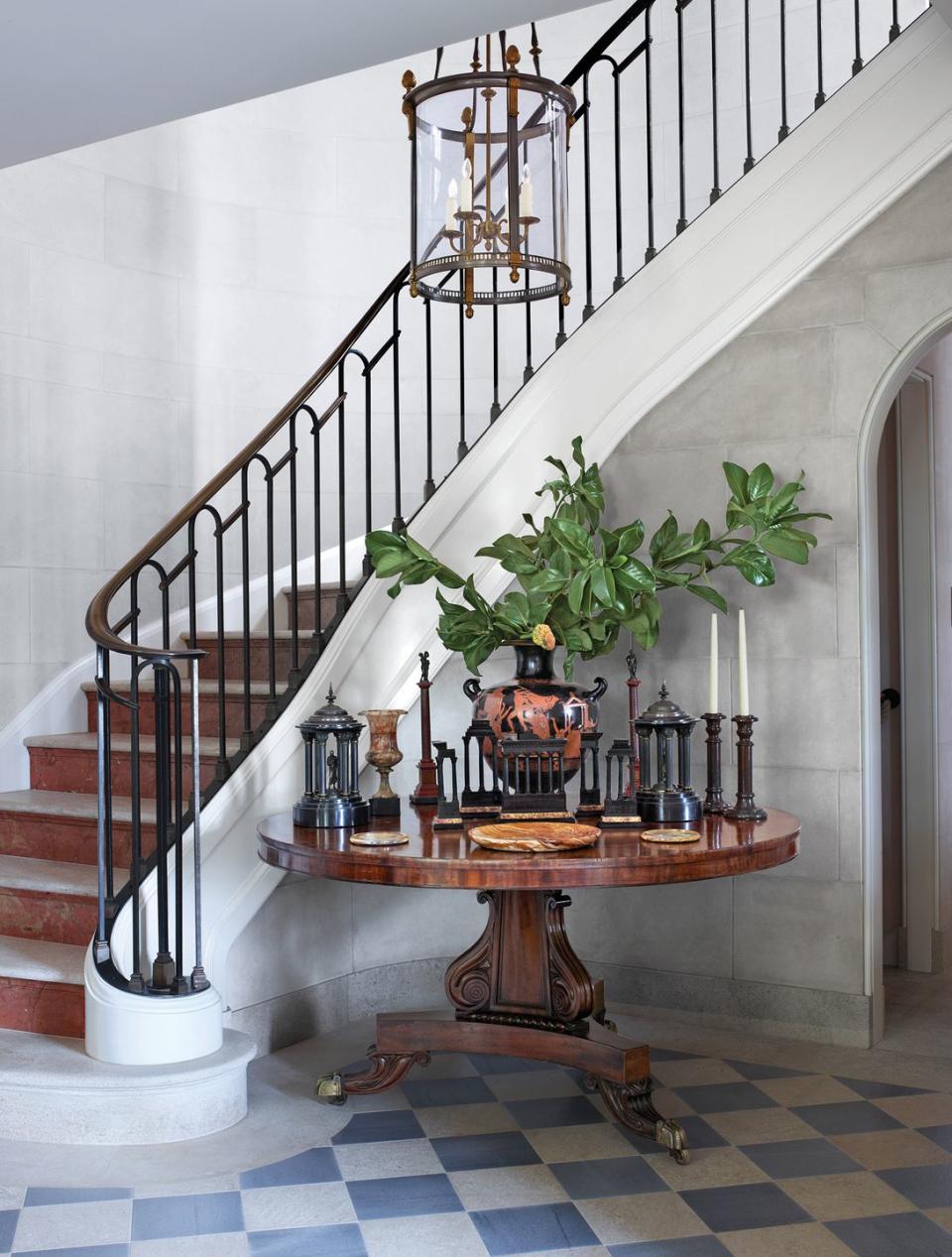
The house, which has been in the owner’s family for many years, has an Edith Wharton–esque majesty. Branca, who first came to Chicago for college (where she met her husband of 42 years, a native of the city, and decided to stay), has an international client roster, but she says it was “a profound gift” to work on a project within walking distance of her own elegant townhouse on Lake Michigan, especially one so architecturally significant. “So many grand homes here have been replaced by gleaming towers,” she says. “When you are able to bring into the present a house with such a past, it’s an enlivening experience.”
The client’s family had for years used Colefax and Fowler, the legendary London firm, to decorate their homes, and while Branca admired the way they had done up the house in the 1980s—“a bit Swedish, with lots of chintz and sherbet colors”—her client, who had recently taken it over, wanted it to better reflect his own style. He is an aficionado of Greek and Roman architecture, as well as a lover of all things Italian, who spends a month and a half of the summer at Lake Como. “He and I are so much on the same wavelength,” she says. “I think of him more as a patron than as a client.”
There is good reason for her to celebrate his enthusiasm and commitment: The gut renovation, in collaboration with HBRA Architects, was among the most elaborate she had ever attempted. With her client’s encouragement, every surface of the 4,000-square-foot house, which is very long but only 20 feet wide, was minutely thought out, then embellished with craftsmanship that evoked the Renaissance in all its handwrought glory. One example: The intricate brick-domed ceiling in the wine room was crafted in Paris by an artisan who had once worked on a renovation of Notre-Dame, then airfreighted to Chicago in two large pieces. Another: When the client decided he wanted a bathroom reminiscent of the lapis lazuli pool at Hearst Castle, in California, Branca searched for nine months to find the perfect stones.
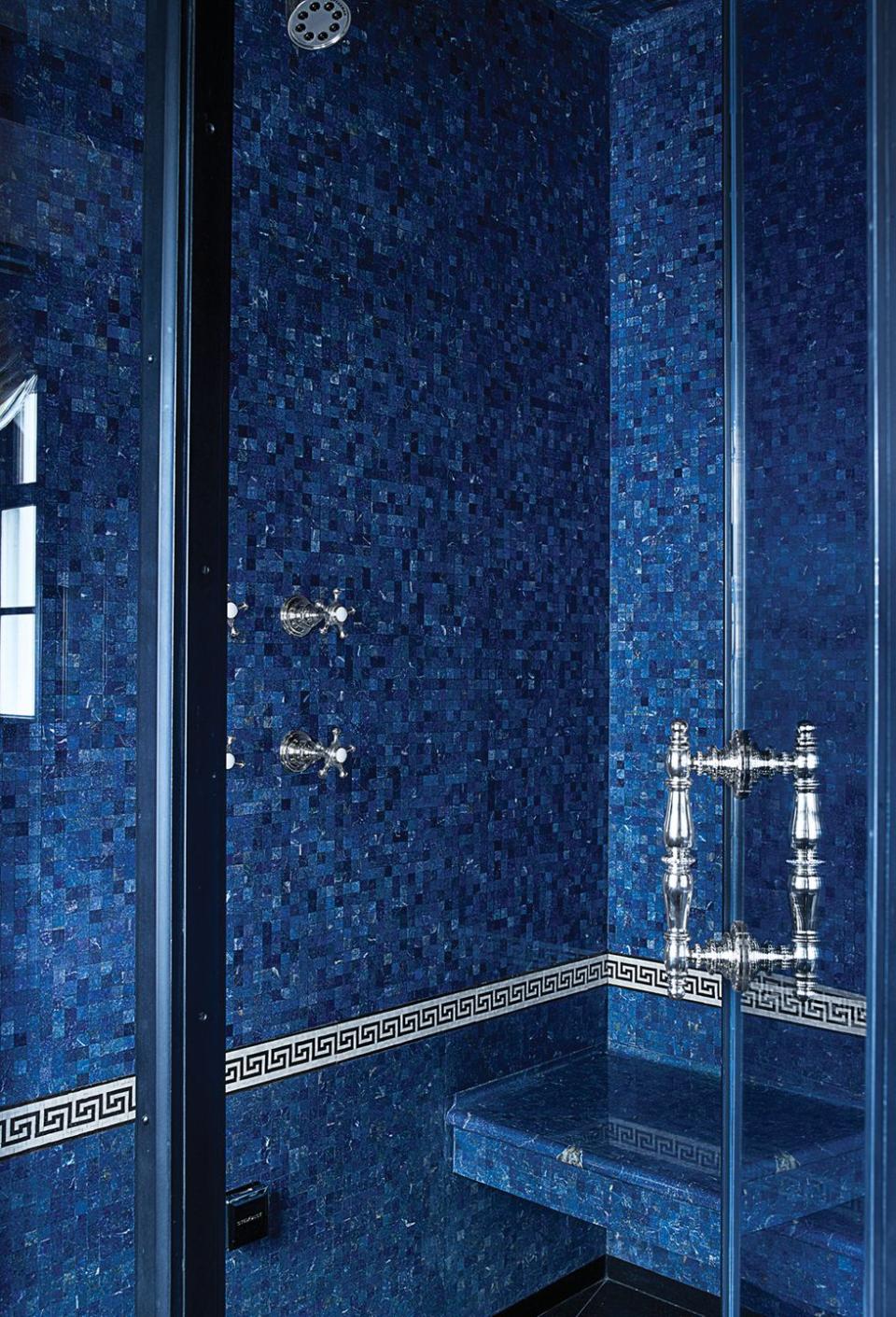
In the dining room, the walls are inspired by a book of illustrations beloved by the client, a pictorial exploration of ancient Greek vases by Sir William Hamilton, the 18th-century diplomat who once played violin with a young Mozart and was the protagonist of Susan Sontag’s 1992 historical novel The Volcano Lover. Artisans re-created the images with gouache and watercolor on parchment that was eventually decoupaged onto the walls in a painstaking process that took nearly three and a half years. “It makes all the difference if you have a client as willing to go to the ends of the earth as you are,” Branca says.
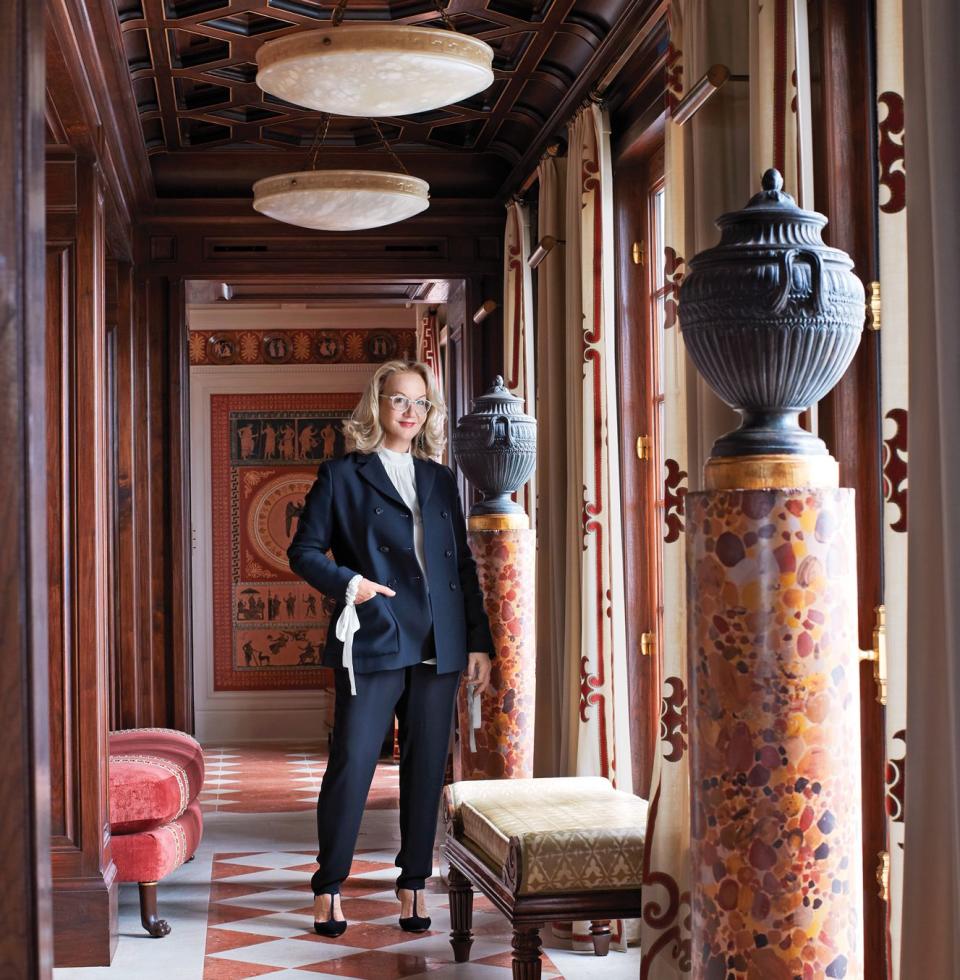
The furnishings are a richly toned mélange of 18th- and 19th-century antiques, many of which nod to Greek and Roman times; they are set off by elaborately patterned fabrics, floors of Bosporus marble, and walnut paneling. (“No mahogany, because we don’t have that wood in Italy,” Branca says.) Tall windows sport custom Fortuny valances, while fauteuils are upholstered in a deep green gauffraged silk velvet.
Branca is as fluent in the language of color as she is in English and Italian, and the hues of the home are the tangerines, midnight blues, and plum-tomato reds one might glimpse through the windows of palazzos near the Piazza Navona. “You can see Caravaggio’s colors in my references, and Fiorentino’s,” she says, referring to Rosso Fiorentino, the 16th-century Florentine Mannerist painter whose work adorns the Château de Fontainebleau in France. Because she wanted to bring those robust shades to Chicago, where she knew the light was different, she had the pigments hand-mixed in Rome and transported back to the U.S. to be gently tweaked.
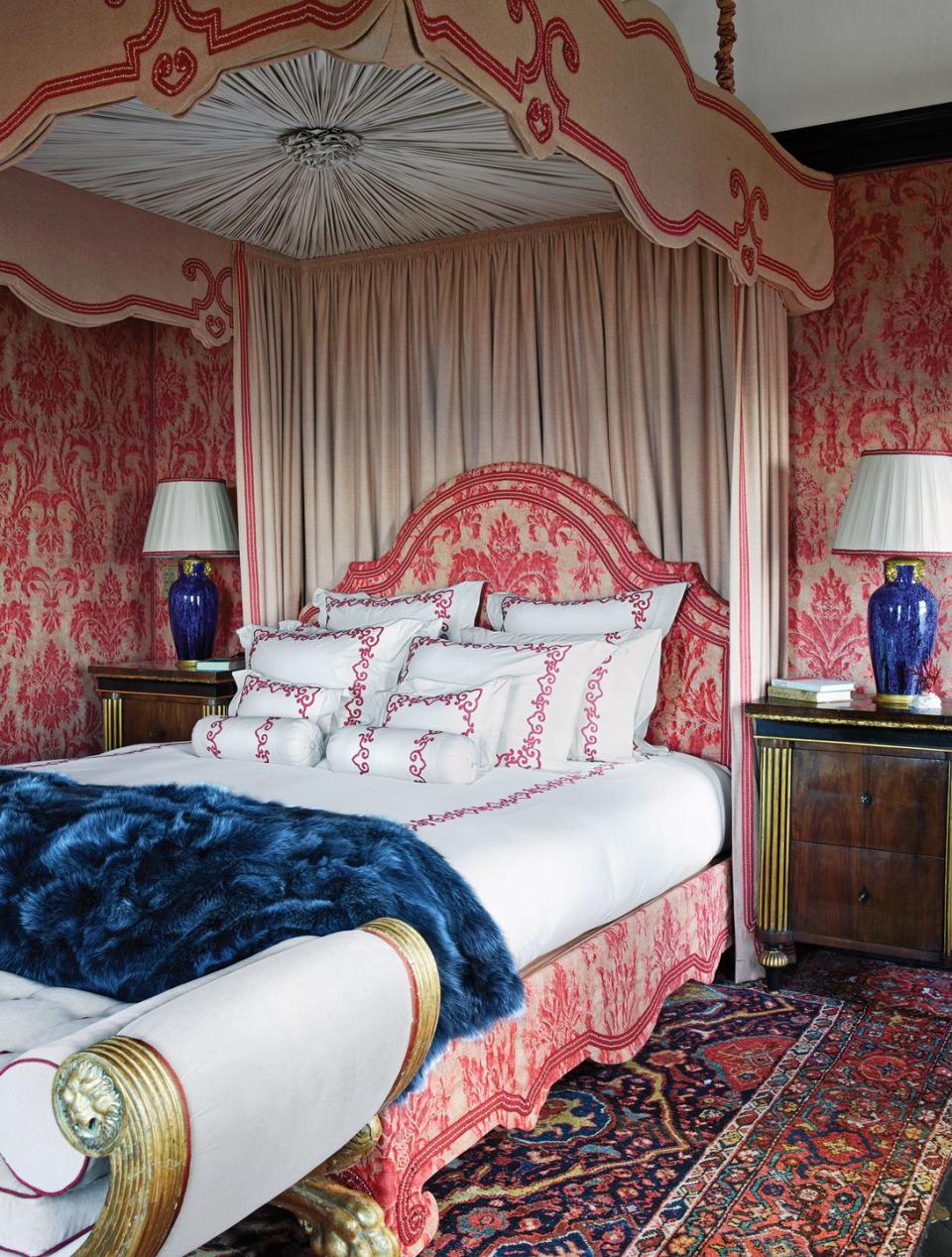
While the house has many touches that evoke an earlier era, Branca balks at being considered a mere revivalist or re-creator of history. What lifts her environments above simple homage is her unerring sense of when pattern or color is in danger of becoming too stifling or reverential; she knows exactly when it is time to introduce a witty 20th-century reference, such as the four-panel living room screen done by Fornasetti in 1955, a clean stripe on a wall, or an uncurtained window letting in the sun. It is this contrast, which comes from an instinctual place deep within Branca’s globe-trotting imagination, that distinguishes her work. “I have one underlying belief that extends through every project, from the Bahamas to London to New York to here,” she says. “Every home should be arms wide open.”
This story originally appeared in the June 2019 issue of ELLE Decor.
SUBSCRIBE
('You Might Also Like',)

